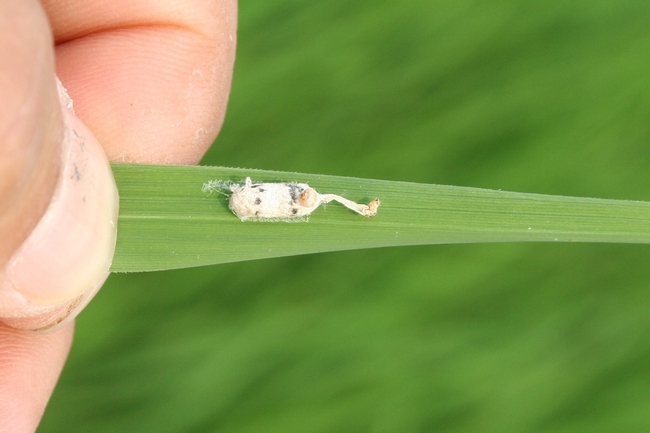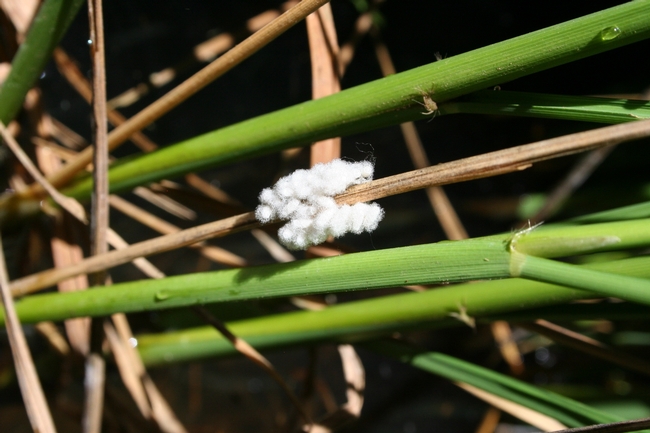Winter is a good time to catch up on scientific reading. On a paper published in the Journal of Economic Entomology last year, Chinese scientists determined that certain insecticides used in rice (in China) are compatible with the wasp Trichogramma japonicum, a parasitoid of eggs of lepidopterans (moths). Among the insecticides classified as safe to the parasitoid were pyrethroids, insect growth regulators and neonicotinoids. Organophosphates and carbamates were classified as toxic and not very compatible with the wasp*.
Trichogramma wasps are very small, and present in many crops as parasitoids of insect eggs. I have collected them from lepidopteran (stem borers) eggs from rice in Texas. I don't know if they are present in California rice parasitizing our lepidopterans (armyworms); I'll have to collect some armyworm eggs and see if I can recover some.
The article made me think about how insecticides are used in California rice. We have two species of armyworms commonly found in rice late in the season. These two species can feed on rice foliage and panicles, but seldom injure rice to the point of producing yield losses. There might be several reasons for this. One is that at the time of infestation, rice has abundant foliage and the armyworms would have to consume a lot of it to cause a yield reduction. Another reason, and maybe the main one, is that there are several other organisms in a rice field that will feed on the armyworms and limit their population growth. There are two important wasps that parasitize these armyworm larvae. Their cocoons (which are formed after the wasp larvae have consumed the armyworm larvae) are commonly found in rice fields.
| Cocoon of the parasitic wasp Hyposoter exigua. |
 |
| Coccons of the parasitic wasp Apanteles militaris. |
 |
Other organisms feeding on armyworms are spiders, beetles, bugs, even birds. There are probably egg natural enemies too, but I don't think they have been thoroughly documented yet. This abundance of natural enemies is in part the result of the judicious use of insecticides in California rice. Most insecticide applications are done early in the year, when the populations of natural enemies have not built up yet, but pest populations are starting to move in. Additionally, applications are mostly done to field borders, and not entire fields, leaving untreated areas that natural enemies may use as “refuges”. Also, the main type of insecticides currently used in California is the pyrethroids; these have replaced the organophosphates and carbamates that were commonly used in the past.
*Zhao, X. et al. 2012. Assessment of toxicity risk of insecticides used in rice ecosystems on Trichogramma japonicum, an egg parasitoid of rice lepidopterans. J. Econ. Entomol. 105: 92-101